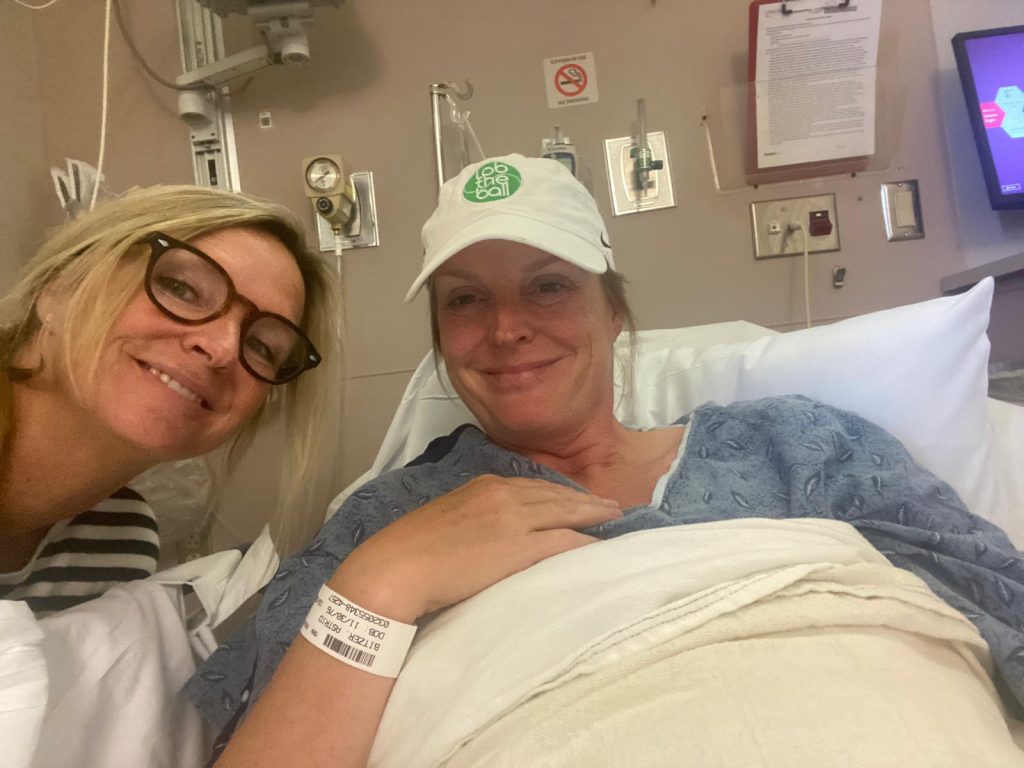My journey through breast cancer: 13 Biopsies, a lumpectomy, a mastectomy, and an oophorectomy
Hi everyone, if you’re reading this, you might be facing something similar, or maybe you’re simply curious about what it’s like to walk through a relentless health battle.
My name is Astrid, and I’m sharing my story not for sympathy, but for awareness, connection, and maybe a bit of hope.
Over several years, I went through 13 biopsies, a lumpectomy, a mastectomy, and an oophorectomy (removal of my ovaries). It was far from a straight path — filled with uncertainty, pain, resilience, and ultimately, a whole new perspective on life.
The beginning: suspicion and the first biopsies
It all started in 2022 with a routine 3D mammogram. A small, suspicious spot appeared, and just like that, I was sent for my first biopsy. That tiny needle felt like an invasion, but I had no idea it was only the beginning.
The results came back the next day. (The longest 24 hours of my life.)
In the months that followed, more suspicious areas and calcifications appeared. Biopsy after biopsy. Each one brought anxiety in the waiting room and more questions when the results arrived.
By biopsy number five, I felt like a human pincushion.
Why so many? Breast tissue can be deceiving. Some samples showed atypical hyperplasia, not cancer, but a warning sign. Others were just dense tissue that fooled the imaging.
I learned quickly that not all biopsies are created equal. Some were stereotactic (guided by mammogram), others ultrasound-guided, and a few even MRI-guided for hard-to-reach spots. Each one left me sore, bruised, and emotionally drained.
The lumpectomy: a step toward clarity
After about eight biopsies, I lost count by then, one finally confirmed it: early-stage breast cancer. It was ductal carcinoma in situ (DCIS): contained, but serious enough to act fast.
My oncologist recommended a lumpectomy, removing the affected tissue while keeping the breast intact. It was an outpatient surgery under general anesthesia, they removed the lump, some surrounding tissue, and performed a sentinel lymph node biopsy to check for spread.
When I woke up, I felt relief… and also a strange sense of violation.
Recovery was rough, pain, swelling, limited movement, but my love for tennis helped me bounce back faster than expected.
Pathology showed clean margins, but one lymph node was positive.
For a moment, I thought, “Okay, I’ve beaten this.”
But the care team kept digging. That lymph node contained cancer that didn’t match what was in my right breast. Which meant one of two things: either the cancer had spread through my lymph system, or there was another, hidden cancer in my right breast.
The turning point: choosing a double mastectomy
In medicine, there’s something called a peer board, where doctors consult with other specialists on complex cases. My surgeon, Dr. Jenifer Steiman, brought my case to this board three times.
During the last meeting, a sharp-eyed radiologist noticed something that had been missed before: lobular cancer, a type notoriously hard to detect in dense breast tissue.
More biopsies followed. More clips. And soon, it became clear: the safest path forward was a double mastectomy.
The surgery was long, several hours, removing both breasts and using a reconstruction technique called the Goldilocks procedure. Waking up without my natural breasts was surreal. It felt like losing something deeply tied to who I was as a woman.
The pain was manageable, thanks to medication. But the drains? Those freaked me out.
Caring for my wounds would’ve been impossible without my sister Annemieke, she was the superstar of my recovery.
At the same time, I started taking tamoxifen, a hormone blocker. It felt like a double blow: I had lost my breasts, and now I was losing the hormones that made me feel like me. My body didn’t feel like mine anymore and mentally, I spiraled for a while.
The next chapter: oophorectomy and surgical menopause
Because my cancers, ductal, lobular, and mixed, were all estrogen-positive, my ovaries were next. At 46, I underwent a laparoscopic bilateral salpingo-oophorectomy removing both ovaries and fallopian tubes.
Overnight, I was thrown into surgical menopause. Hot flashes, mood swings, bone density worries, all of it hit at once. I started on another hormone inhibitor, letrozole, which still causes side effects to this day.
Writing this now, I can see how much I lost in such a short time.I used to have endless energy and loved being active. Now, I wake up and have to unclench my stiff hands for the first few minutes. My joints ache in the strangest places, and that post-menopausal belly? Let’s just say I’m still learning to accept this new version of me.
Reflections: what I’ve learned
Looking back, this journey tested every part of me. Physically, I went through more procedures than I ever thought possible. Emotionally, I faced depression, anxiety, and moments of deep gratitude for my family, friends, and amazing medical team.
If you’re facing something similar, here’s what I want you to remember:
- Be your own advocate. Ask questions. Get second (or third) opinions.
- Build your support network. Friends, family, support groups, whatever keeps you going.
- Keep moving. It’s the best way to loosen your body and your mind.
- Take care of yourself. Nutrition, exercise, therapy, they truly make a difference.
- Be kind to yourself. Set boundaries. Celebrate small wins. Practice gratitude.
Today, I have no evidence of disease. Stronger, more grounded, and more grateful for the fragility and beauty of life.
If my story helps even one person feel a little less alone, it’s worth sharing.
If you’re on a similar path, I’d love to hear from you.
Stay strong,
— Astrid
